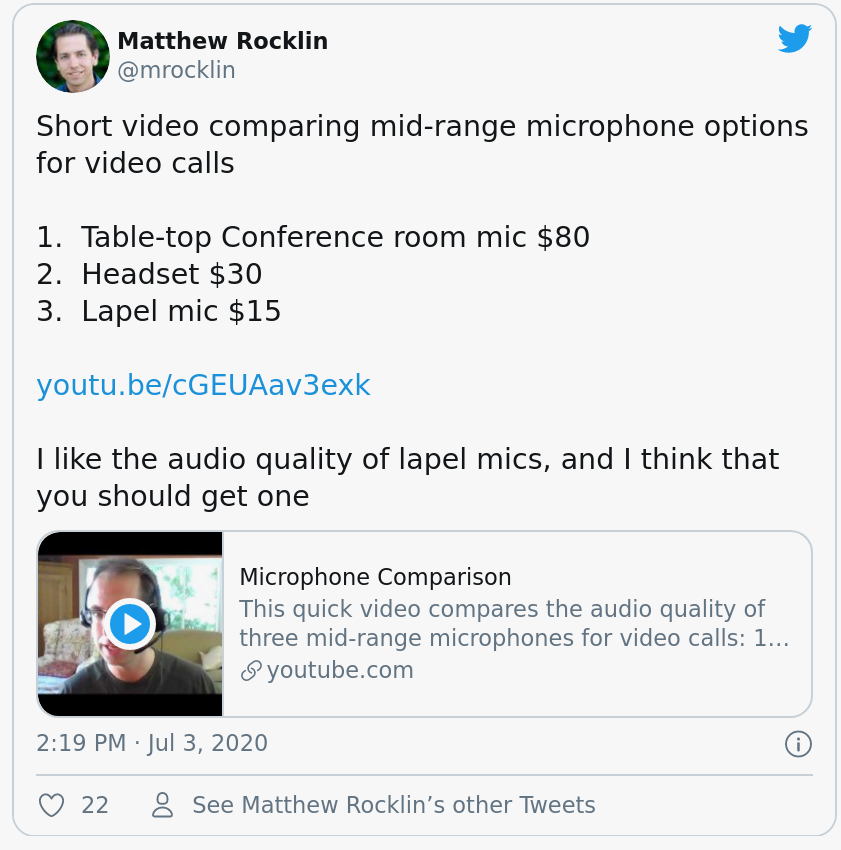Ideal Tweet#
Tweets, like all writing, should respect the reader through brevity and structure.
Caveats#
First, I’m mostly talking about professional tweets, and less about pictures of family outings, cute cats, or hilarious memes. If that’s how you use Twitter, then please disregard this post (or make fun of it with a hilarious meme).
Example Tweet#
Of my last few tweets, I think that this best exemplifies brevity and structure.

What I like about this structure#
It starts with a short, single-line explanation, followed by a line break.
People skim, especially on Twitter. We need to get to the point immediately. The line break helps the eye focus on the summary/hook, and buys us a little bit of attention while the reader decides if they want to read more.
It then delivers actual novel content
After you’ve hooked the reader you can deliver some novel information. Here we follow with an enumerated list, including actual novel information like prices. Readers learn something on the internet, huzzah!
There is clickable link with an image
Tweets with clickable images seem to get shared more often. I’m not a fan of including stock photos just for click bait (this disrespects the reader in my opinion), but if you are linking to a blogpost or video, it’s nice if SEO is active enough to have a clickable thing on the bottom.
Deliver personalized opinions at the end
As a social medium, Twitter is slightly more personal than a blogpost. When I write a blog I try to remain neutral and precise (arguably too much so). On Twitter I don’t mind stating the occasional personal opinion or bias. I think that a subtle tint of personality makes me feel better about my tweets, and maybe improves engagement too.
People like it when humans act like humans sometimes.
Things to avoid (in my opinion)#
I personally filter out most tweets that are half #hashtags and @mentions. In my experience these are usually written by professional marketing folks, and I’ve learned to associate a bit less value to these tweets.
Of course, there is a trade off here. Accounts that are explicitly mentioned are more likely to retweet. Tagging influencers feels cheap, but can sometimes be effective. Personally, I like adding them in replies at the bottom “Hey @famousperson, I was thinking of your post … when writing this up. I’d love to know if you have thoughts.” In general I think that self-replies are a great way to avoid packing too much into the header tweet, while still engaging other folks that you want to engage.
Separately, I also think, perhaps unusually, that the normal rules of writing apply. I avoid walls of text, abbreviations, internet shorthands, and so on.
Engagement#
I think that these suggestions make it easier to scan and abosrb, which I think eventually lead to improved engagement.